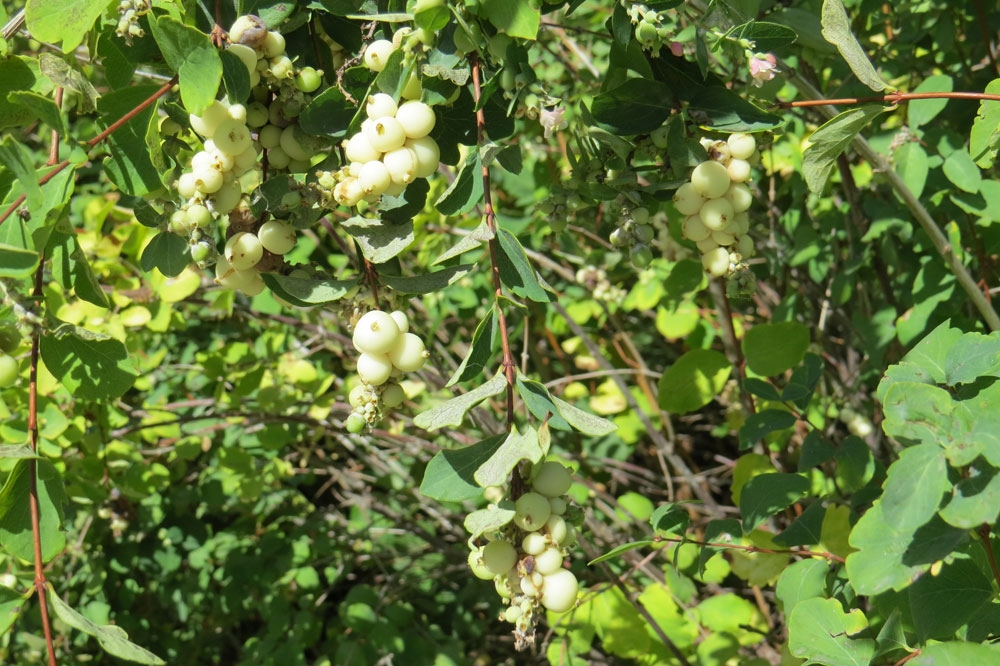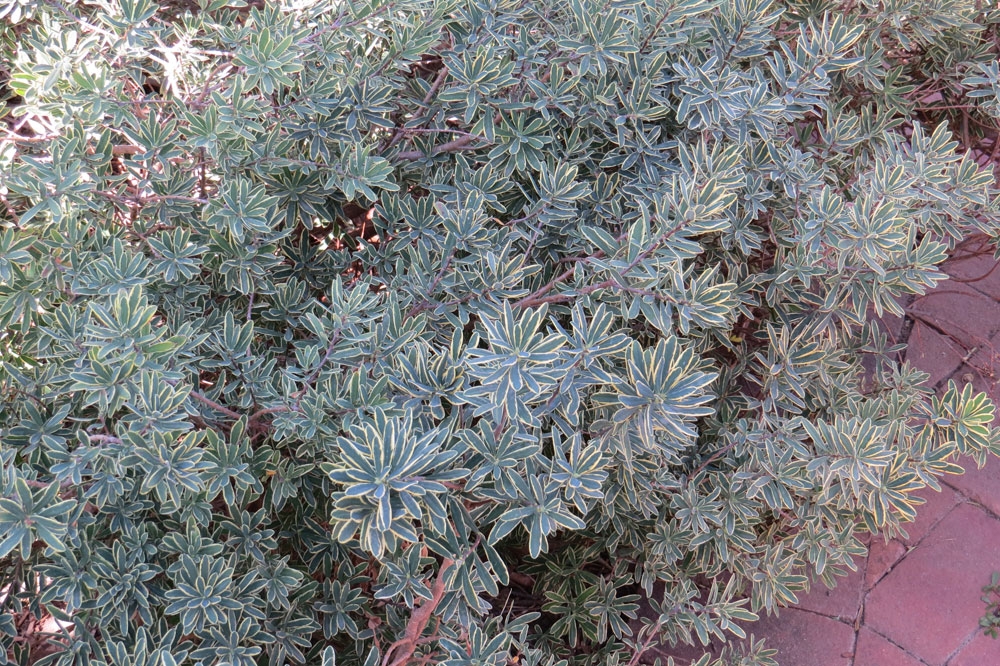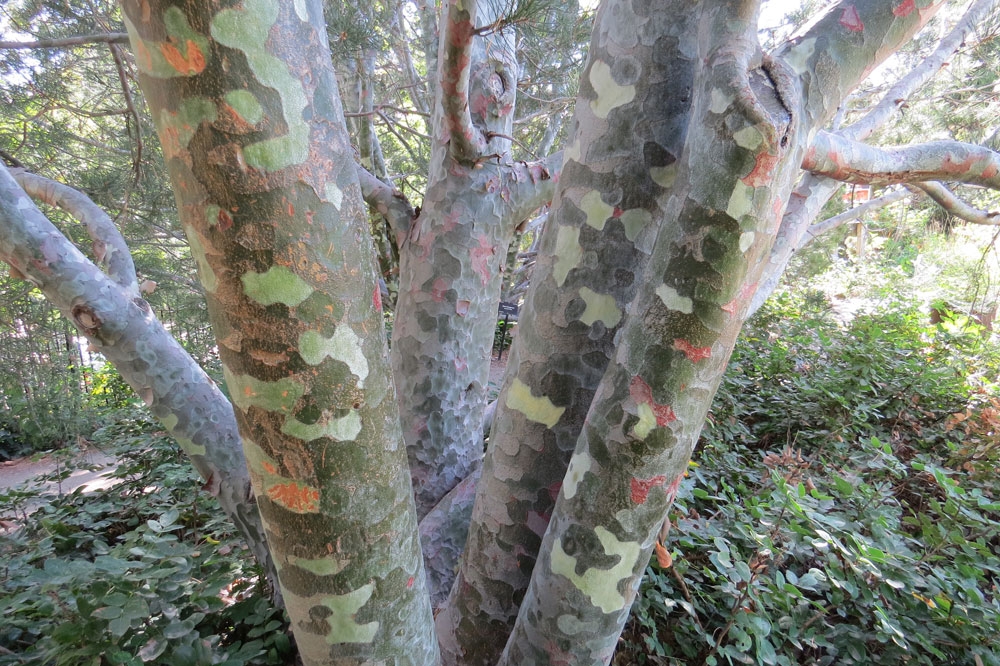October Walking Tour: Fall Foliage and Berries
It’s a little hard to believe, but fall truly is upon us. The days are shorter, the air is crisper and, any day now, the trees will let go of their leaves and keep us busy raking until November. During this time of the year, many visitors ask if there are still plants worth seeing in the outdoor displays. Certainly, many flowers are still putting on a show. The easiest way to find them is to follow the hordes of bees and butterflies collecting the last bits of pollen to aid in their journey south or to prepare for their winter break. However, fall is also the best time to appreciate some of the plant features that are overlooked in the warmer months. Among these are berries, evergreen foliage and interesting bark patterns.
The snowberry shrub (Symphoricarpus albus), so called because of the many clusters of small, white berries, is a plant that becomes more beautiful as its leaves begin to drop. Most seasons, the berries persist through the winter providing food for foraging birds. A large group of these shrubs can be seen along the Monet Pond as you enter the Japanese Garden.
Another group of plants with a spectacular late-season fruit set are the prickly pear cacti (Opuntia spp.). Throughout several of our gardens, including Water-Smart Garden and Dryland Mesa, Opuntia phaeacantha are covered in fruit that is not only beautiful, but also quite delicious once all the spines are removed!
In addition to thriving in dry conditions and producing a gorgeously scented bloom in late spring, the semi-evergreen foliage of Daphne ‘Carol Mackie’ (Daphne x burkwoodii ‘Carol Mackie’) also provides an interesting texture to the fall landscape. Deciduous evergreen shrubs are somewhat hard to come by in Colorado; for some of the best examples at the Gardens, check out the Romantic Gardens.
My last suggestion for appreciating the Gardens in fall is to admire the tree bark that is so often overshadowed by leaves and flowers during the growing season. That being said, my number one recommendation happens to be the bark of an evergreen tree, Pinus bungeana, or the Lacebark Pine. You must make a visit to the Birds and Bees Walk to see the camouflage-like bark of this gorgeous specimen!
Fall Foliage and Berries Gallery



Add new comment